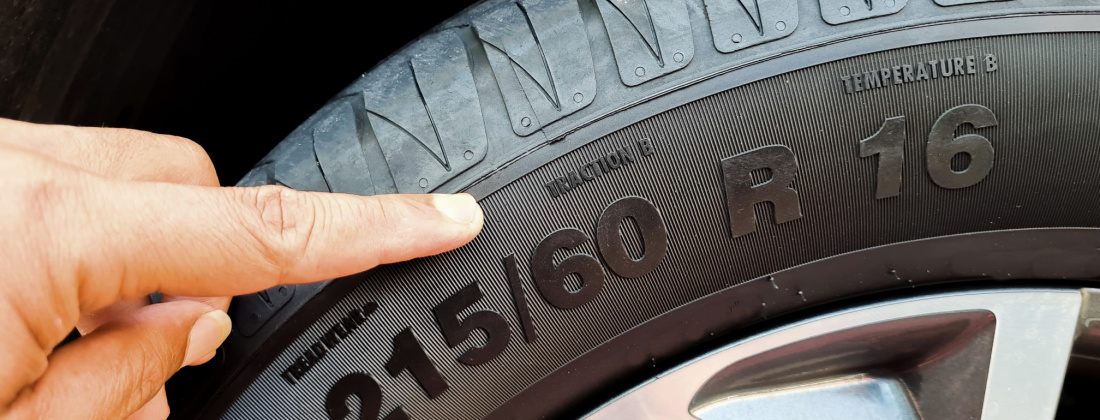How to Read Tire Specs
November 23, 2022
Tires

Welcome to Trail Tire! You must be wondering how to read tire specs if you’re here. Don’t worry; you’re not alone. Many people are confused by all the numbers and letters on a tire’s sidewall. Is it speed? Is it directional information? Is it load carrying capacity? Don’t despair because I’m here to help. In this blog post, I’ll explain everything you need to know about reading tire specs. When you purchase your next set of tires, you’ll be a Tire Spec Reading Expert! So let’s get started…
Introduction
When shopping for tires, you’ll notice a lot of numbers and letters. To the uninitiated, this can be quite confusing. This guide will help you decode these tire specs to make an informed decision when buying new tires.
There are three main aspects of a tire that are important to understand: size, load rating, and speed rating. Each of these is represented by a code stamped on the tire’s sidewall.
What do the numbers on tires mean?
If you’ve ever wondered what all those numbers on your tires mean, this guide is for you. We’ll break down everything you need to know about reading tire specs. From load indexes to speed ratings, we’ll cover it all. So grab a cup of coffee, and let’s get started.
Tire width
Tire width is the first number listed on the sidewall and indicates the tire’s width in millimetres measured from sidewall to sidewall. For example, if a tire has a width of 215, that means that the distance from one side of the tire to the other is 215mm.
The second number is the aspect ratio, and it tells you the height of the tire’s sidewall. In our example, if the aspect ratio is 65, that means that the height of the tire’s sidewall is equal to 65% of its width. Therefore, if we take our215mm wide tire and multiply it by 0.65 (or 65%), we get 139mm for the height of the sidewall.
Aspect ratio
The aspect ratio is the height of the sidewall expressed as a percentage of the width. In other words, it’s the height of the tire from rim to tread divided by the width. For example, an aspect ratio of 65 means that the height equals 65% of the width. The lower the aspect ratio, the wider and shorter the tire; the higher the aspect ratio, the taller and narrower the tire.
Rim size
One of the most important aspects of a tire is its rim size. The rim size is the diameter of the wheel that the tire is mounted on. For example, a tire with a 16-inch rim size will be made to fit on a wheel with a 16-inch diameter.
There are a few different ways that tire sizes are indicated, but the most common way is by using inches. For example, a common size for passenger vehicles is 205/55R16. The first number in this example (205) indicates the width of the tire in millimetres. The second number (55) indicates the height of the sidewall as a percentage of the width. The R in this example indicates that it is a radial tire. The 16 at the end indicates the rim size in inches.
Another way that tires are sometimes sized is by using metric measurements such as 315/70R22.5. In this case, 315mm is the width of the tire, 70% of 315mm is 221mm (the height of the sidewall), R indicates that it is a radial tire, and 22.5 inches is the rim size.
It’s important to ensure that you get tires compatible with your vehicle’s rim size. If you put tires on that are too big or too small for your rims, it could cause problems such as making your speedometer inaccurate or causing your tires to rub against your vehicle’s body when you turn sharply.
Deciphering other markings on tires
In addition to the tire name and size, there’s a lot of other information on a tire’s sidewall. These markings provide essential details about the tire, including its load capacity, speed rating, and when it was manufactured. While it may seem like a lot of information to process, it’s actually not that difficult to read tire specs once you know what you’re looking for.
Speed rating
The speed rating tells you the tire’s maximum speed capability when properly inflated. Speed ratings range from A (the lowest) to Y (the highest).
The speed rating system was developed in Europe in the 1950s. It originally included just a handful of ratings ranging from A8 (later changed to A1) for a tire with a maximum speed capability of 31 mph to ZR, with a top speed above 149 mph. The system has recently expanded to include more than two dozen ratings.
Most passenger car tires sold in North America are rated H (130 mph), T (118 mph), S (112 mph), or Q (100 mph). The majority of light truck tires and SUVs are rated LR C (106 mph), LRC D (99 mph), LRC E (93 mph), or LRC F (87 mph).
Temporary spare tires are limited to 50 miles per hour because they are usually smaller than regular tires and not as capable at high speeds.
Load Index
Most passenger car tires have a load index of 86 or higher. The load index is a numerical code included on a tire’s sidewall that corresponds to the maximum amount of weight the tire can support when properly inflated. Use the load index to help select the proper tires for your vehicle based on the amount of weight they need to support.
The higher the load index number, the greater the tire’s load-carrying capacity. For example, an LT tire marketed as “10-ply” would have a load index of 120/116, indicating it can carry 3,086 lbs. (1,397 kg) at up to 65 mph (105 km/h) or 2,756 lbs. (1,251 kg) above 65 mph (105 km/h).
UTQG
The Uniform Tire Quality Grading (UTQG) is a U.S. government-mandated tire rating system designed to provide drivers with comparative information on tire treadwear, traction, and heat resistance.
Treadwear: The treadwear grade is a comparative rating based on the tire’s wear rate when tested under controlled conditions on a specified government test track. The higher the treadwear number is, the longer it should take for the tread to wear down. For example, a tire graded 150 should last 1.5 times as long on the test track as a tire graded 100. However, you may not necessarily see a 50% improvement in tread life on the road because other factors, such as tire pressure and road surface, also play a role in mileage performance.
Traction: To receive an A, B, or C traction grade at each speed, a tire must achieve certain minimum pulling forces (measured in pounds) under controlled laboratory conditions on specified government test surfaces of asphalt and concrete. Generally, the higher the traction number is within its letter group (A-B-C), the better braking performance you can expect on wet roads.
Heat resistance: The heat resistance grade is based on results of both high-speed endurance and accelerated simulated usage testing conducted under controlled laboratory conditions by the tire manufacturer to measure changes in physical properties of various compounds used in tread construction that affect heat build-up and resistance to the heat generated while driving at high speeds for prolonged periods of time.
Conclusion
We hope this guide has helped you understand how to read tire specs and what all the numbers on your tires mean. If you have any further questions, please don’t hesitate to contact our team of experts.
Back

